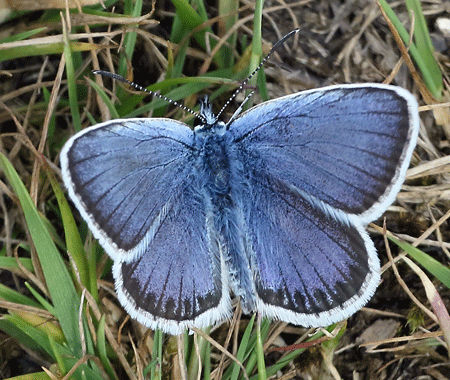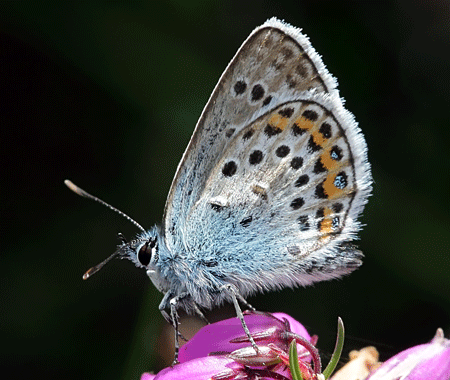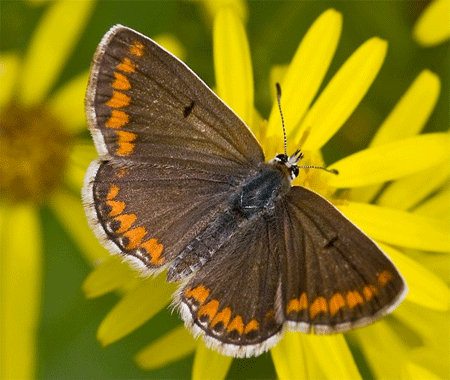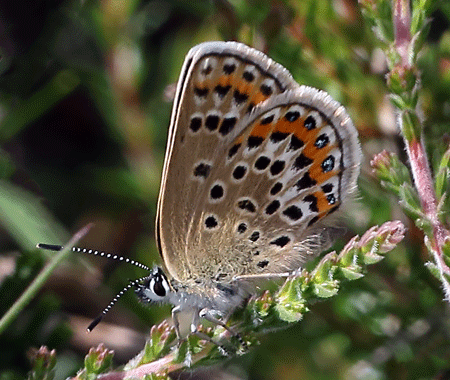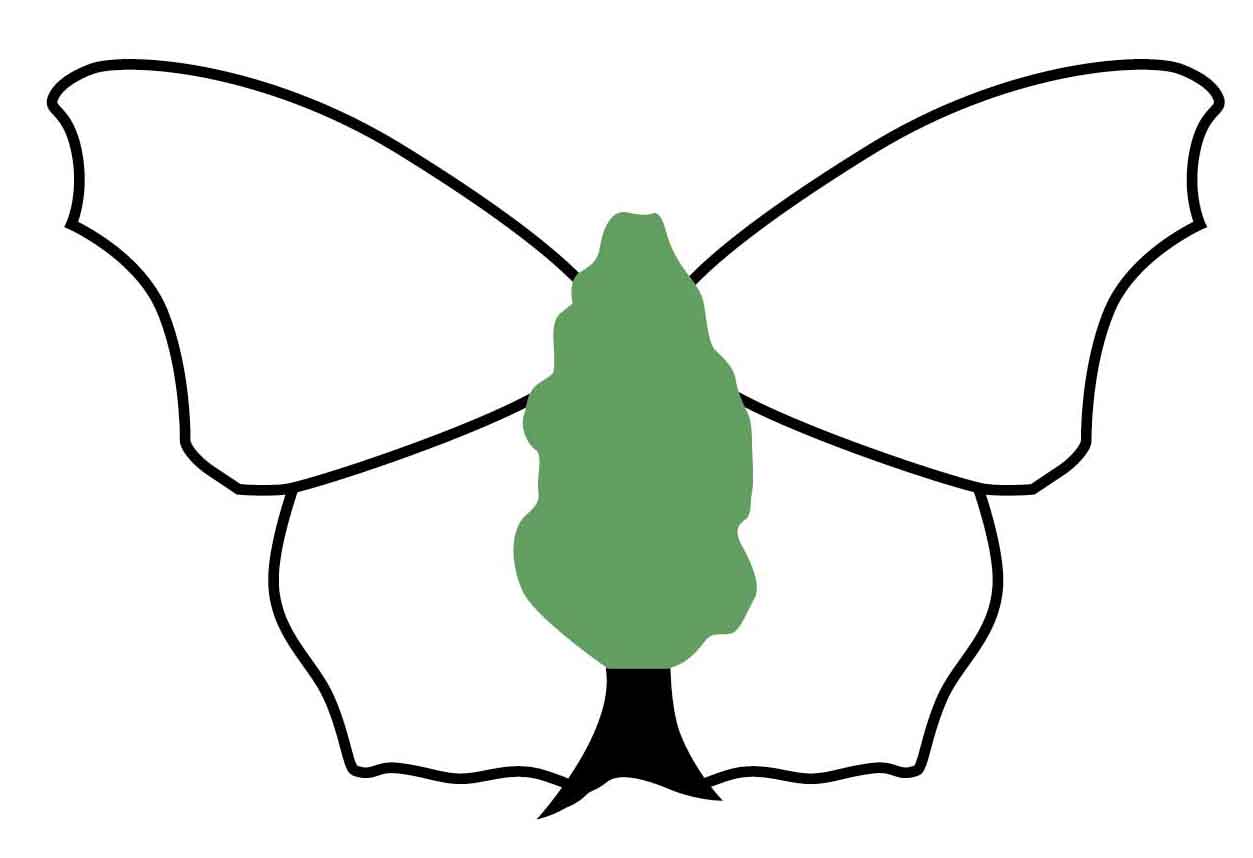 | Butterfly Conservation Saving butterflies, moths and our environment | Upper Thames Branch |  |
Silver-studded Blue (Plebeius argus) | ||||||||||||||||
| Description | ||||||||||||||||
| Wing span: 26-32 mm. This species gets its name from the silver studs on the underside hindwing. The male has blue upper surfaces, with wide black margins and white fringes. The female is chocolate-brown with orange submarginal lunules. The strongholds of this butterfly are the heathlands of southern England and East Anglia. There are also colonies on the coasts of North Wales, Suffolk, Norfolk and Cornwall. This species is typically found on heathland that has not become too overgrown. It is also found on both limestone and chalk grassland. It is a warmth-loving butterfly and is often found in sheltered areas, or those that are south-facing. It is found in close-knit colonies, with individuals rarely flying any distance. Most colonies contain fewer than a thousand adults. | ||||||||||||||||
| Images (click to enlarge) | ||||||||||||||||
| ||||||||||||||||
| Life Cycle | ||||||||||||||||
| Adults fly in July and August, although many colonies, including those in the east of England and north Wales, emerge in the middle of June. There is one brood each year. The over-wintering stage is the ovum, with the larva fully formed inside. Newly-emerged adults, larvae and pupae are often attended by ants (especially the black ant Lasius niger), which offer them some protection from predators. | ||||||||||||||||
| Larval Foodplants | ||||||||||||||||
| The primary larval food plants are Bell Heather (Erica cinerea), Bird's-foot Trefoil (Lotus corniculatus), Common Rock-rose (Helianthemum nummularium), Cross-leaved Heath (Erica tetralix), Gorse (Ulex europaeus), Heather (Calluna vulgaris) and Horseshoe Vetch (Hippocrepis comosa). | ||||||||||||||||
| Nectar Sources | ||||||||||||||||
| Adults feed primarily on Heather. | ||||||||||||||||
| UK Conservation Status | ||||||||||||||||
| Vulnerable | ||||||||||||||||
| Earliest UTB first sighting (since 2004) : 2nd June | ||||||||||||||||
| Mean UTB first sighting (since 2004) : 20th June | ||||||||||||||||
| Species Champion | ||||||||||||||||
| Grahame Hawker Email: silver-studded-blue@upperthames-butterflies.upperthames-butterflies.org.uk | ||||||||||||||||
| Reports | ||||||||||||||||
| Distribution and Sites | ||||||||||||||||
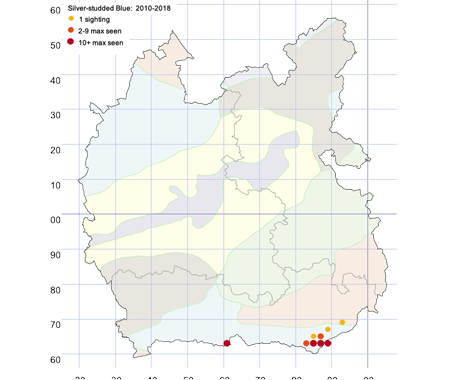 Key |
| |||||||||||||||
| Related Species | ||||||||||||||||
| ||||||||||||||||
Copyright © Butterfly Conservation Upper Thames Branch 2025
Privacy and Copyright Statement
Butterfly Conservation : Company limited by guarantee, registered in England (2206468)
Registered Office: Manor Yard, East Lulworth, Wareham, Dorset, BH20 5QP, Tel: 01929 400 209
Charity registered in England & Wales (254937) and in Scotland (SCO39268)
Privacy and Copyright Statement
Butterfly Conservation : Company limited by guarantee, registered in England (2206468)
Registered Office: Manor Yard, East Lulworth, Wareham, Dorset, BH20 5QP, Tel: 01929 400 209
Charity registered in England & Wales (254937) and in Scotland (SCO39268)

